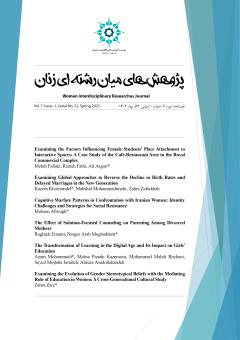-
-
-
Open Access Article
1 - Investigating the mediating role of couples communication styles in the relationship between safe and insecure attachment styles and forgiveness in the family in married women
reza chalmeh fatemeh abdolahi sanaz bageri -
Open Access Article
2 - Predicting married women’s mental health based on quality of life components
Mansor Beyrami soolmaz dehghani dowlat abadi -
Open Access Article
3 - The Comparison of Prevalence of Sexual Dysfunctions in Married Women with and without Symptoms of Cluster B Personality Disorders in Tehran
Elahe Mahdi Asghar Mirmehrabi reza qorban jahromi Zahra Zabihi fard -
Open Access Article
4 - The Relationship between Spiritual Health and Marital Quality in Married Women in Shiraz
Soodeh Dashtiane Nasir Dastan sepideh keshvarz -
Open Access Article
5 - Investigating the Relationship Between Rumination and Perceived Stress with Life Satisfaction in Married Women in Shiraz
Fatemeh Dinakani reza chalmeh fatemeh abdolahi
List of Articles married women
-
The rights to this website are owned by the Raimag Press Management System.
Copyright © 2017-2025


